
Death and Resurrection: The Key to the Old Testament
Why does so much of the Old Testament seem so foreign and irrelevant to those living in the New Covenant era today? Why do we so often struggle to understand how the events in the Old Testament apply to us today? How can we make sense of what seems to be disconnected biographies of saints in the Old Testament? How do events like Israel’s exile into Babylon and promised restoration have a bearing on us today? What are we to make of all the judgment/deliverance accounts? There is, in fact, a very simple answer to these questions. The Bible is about death and resurrection. So often we fail to see that all the events of the Old Covenant revelation were moving forward to the death and resurrection of Christ. This is what Jesus said to the two on the road to Emmaus (Luke 24); and, it is what the Apostle Peter wrote about in 1 Peter 1:10-12. When we get this principle we are greatly helped as we read the Old Testament.
Many find their reading of the Old Testament hindered, in part, because they have not adequately come to understand that the judgment/salvation scheme of the Old Testament (consisting in typical judgments and typical restorations) were pictures of what Christ would accomplish for His people in His death and resurrection. There were numerous types of the spiritual death and resurrection of believers in Him. In short, every picture of judgment and salvation–of exile and restoration–are pictures of the death and resurrection of Christ. Whether it was (1) the judgment of the world in Noah’s day, followed by the newly created world that he and his children stepped off of the Ark to inhabit, or (2) the judgment on Babel, followed by the calling of Abraham and the creation of the covenant people, or (3) the judgment that fell on Egypt (culminating in death in the Red Sea) and the salvation of Israel coming out of that Sea (resurrection) as a typical new creation; or (4) the typical judgment-death of Jonah in the belly of the fish, and his subsequent typical restoration/resurrection from the place of the dead; or (5) the judgment-exile that Israel experienced in the Babylonian captivity, which ended in their restoration to the land–God was always foreshadowing the saving work of Jesus for His people.
In addition to the redemptive events that typified death and resurrection in the Old Testament, there were a number of persons that served as types of the death and resurrection principle in their experiences. Most of us are familiar with Abraham being called by God to offer up Isaac. What we may not know is that the writer of Hebrews tells us that Abraham “received him back from the dead figuratively” (Heb. 11:17-19). Even though Isaac did not literally die, he underwent a figurative death and resurrection. This pointed beyond himself to the sufferings of Christ and the glories that followed.
The life of Joseph is also marked by two death and resurrection experiences: first when his brothers throw him in the well (Gen. 37:20) and then sell him to the Ishmaelites (death) followed by his being placed over all in Potiphar’s house (resurrection). Then there is the account of his being falsely accused and thrown into prison (death) followed by his placed in the second highest place of power (resurrection).
Additionally, the narrative of David’s life also reveals a series of typical death and resurrection experiences. Consider how often David underwent a typological death situation–hiding in caves and rejected by all that was followed by a resurrected exaltation and enthronement.Daniel was thrown into the lions den (death), had a stone rolled over it, and then was brought out(resurrection) as if he had undergone a figurative resurrection. How can we not see the parallel with the resurrection of Christ in the stone being rolled away prior to this typical resurrection? Shadrach, Meshach and Abed-Nego also underwent something of a typological death and resurrection when they were thrown into the fiery furnace and then brought out unharmed.
All of these events were preparing God’s people for the greatest death and resurrection in history. When Jesus died and rose again, all was accomplished. The prophetic restoration came to glorious fulfillment. God’s people were raised up with Christ (Ephesians 2:4-6) and seated with Him in the heavenly places. Vern Poythress makes the important point that “the Old Testament as a whole, through its promises, its symbols, and its pictures of salvation, looks forward to the actual accomplishment of salvation that took place once for all in the life, death, and resurrection of Jesus Christ." Poythress explains how the Israelites’ crossing of the Red Sea has this principle of death and resurrection guiding it. He writes:
Baptism into Moses in the cloud and in the sea mentioned in 1 Corinthians 10:1-13, prefigures baptism into Christ, which in turn points to Christ’s substitutionary death and resurrection. A whole host of typological events in the Old Testament prefigure the substitutionary sacrifice of Christ. In sum, Israel came under the dominion of God by experiencing death in the form of symbolic substitutes.1
The judgment-salvation structure is most clearly seen in the judgment-restoration prophecies of the Major and Minor Prophets. The LORD was constantly threatening and executing judgment on Israel for their covenant breaking. Usually He used Israel’s enemies to bring subjugating judgment on them for their sin.
However, one cannot read the prophets without discovering this radical turn from judgment to blessing. How is it that in the same book the same God can prophecy radical judgment and radical salvation to the same people? The answer lies in the substitutionary sacrifice of Christ. Perhaps the strongest proof of this (besides the suffering Servant prophecy of Isaiah 53) is found in the prophecies of Zephaniah. The book of Zephaniah does not open on a happy note. God promised Israel that He would bring about severe destruction for their sin (Zeph. 1:1-7); but, by the end of the book, the LORD promised to save and bless this people (Zeph. 3:14-20). What changed? In Zephaniah 1:7 we learn that the judgment on Israel is likened to a sacrifice. Explaining the judgment Israel is about to receive, the prophet wrote: “For the Lord has prepared a sacrifice; He has invited His guests” (Zeph. 1:7). This may be the only time in the prophets that the recipients of judgment are called “a sacrifice.” It is language reminiscent to the true and great Israel, Jesus Christ–who became “an offering and a sacrifice to God for a sweet-smelling aroma” (Eph. 5:2). Christ took the judgment that we deserve so that we might receive the blessing of salvation.
In order for the wrath of God to be satisfied and propitiated Christ had to be sacrificed. Now we who are trusting Him alone for salvation, though we deserve the judgment of eternal punishment and curse have already received eternal life and blessing. He became a curse for us that we might be blessed. He was exiled from the presence of His Father when He cried out, “My God, My God, Why have you forsaken me?” so that we might receive the promises of restoration and eternal dwelling in the presence of our God.
1. Vern S. Poythress The Shadow of Christ in the Law of Moses, (Phillipsburg, NJ: P & R Publishing; Reprint edition, March 1, 1995) taken from the section titled, “The Significance of Holy War: Justice and Purity.” See also O. Palmer Robertson’s The Christ of the Prophets (Phillipsburg,NJ: P & R Publishing, 2004) p. 501
Related Resources
Vern S. Poythress The Shadow of Christ in the Law of Moses
O. Palmer Robertson The Christ of the Prophets
David Murray Jesus on Every Page
Edmund Clowney Unfolding Mystery
Nick Batzig "Christ and the Exile/Restoration" (audio and video)

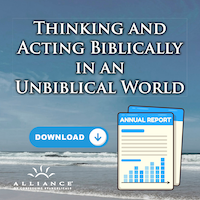
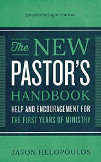
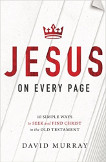
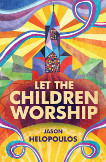
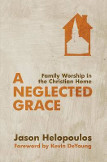













 © Alliance of Confessing Evangelicals
© Alliance of Confessing Evangelicals


